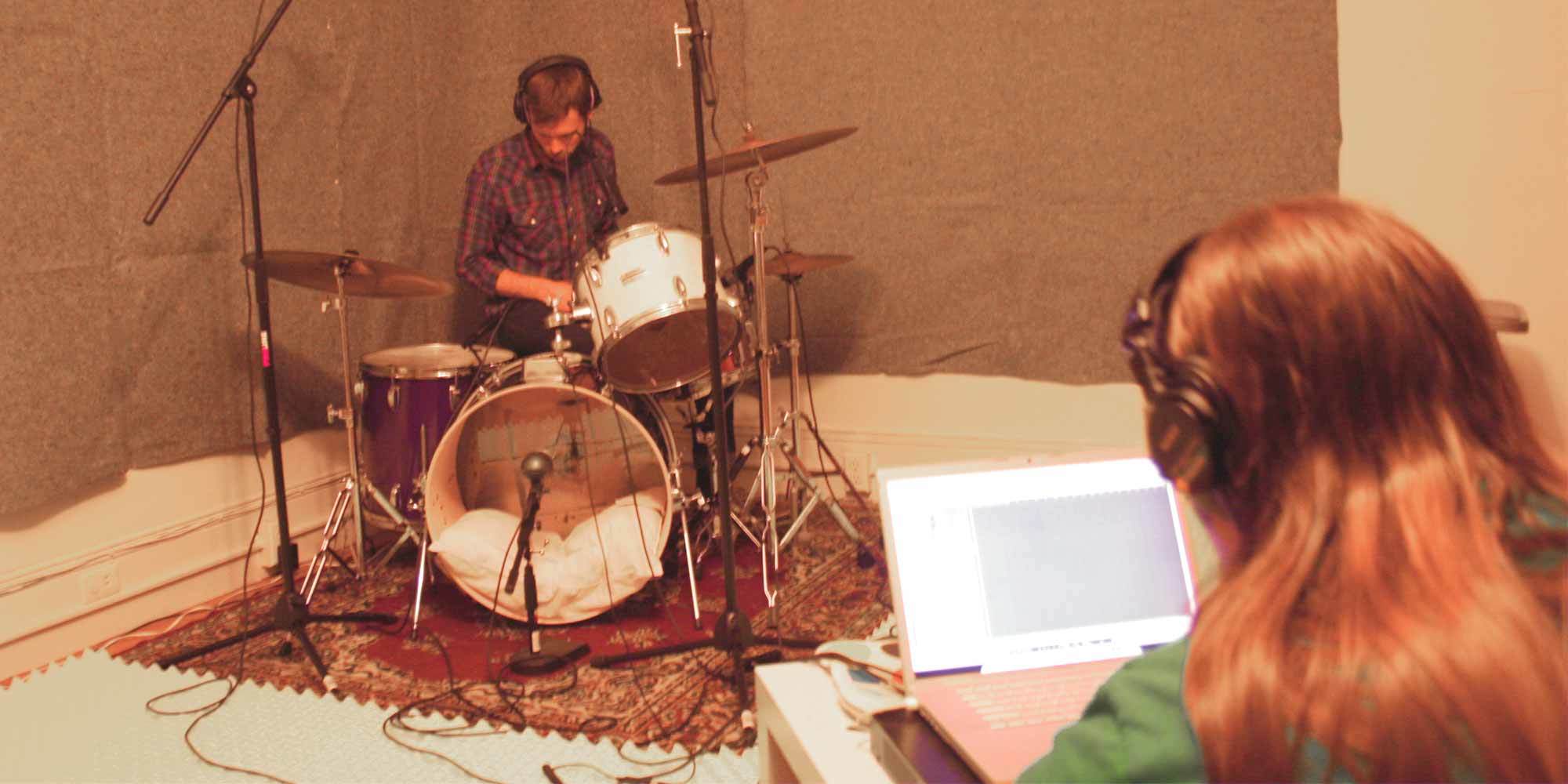The phase of a wave is simply the current point in its cycle at any given time, but phase is best understood as the time relationship between multiple signals containing the same information. When two audio signals of the same source (such as multiple drum microphones or DI and amp signals of a guitar performance) combine, phase cancellation can occur if they out of phase with each other, resulting in loss of certain frequencies or the entire signal.
“In Phase” vs. “Out of Phase”
Phase is measured in degrees. With a sine wave, for example, 0° represents the starting point. The first peak is at 90°, the wave crosses into the negative at 180°, and completes its cycle at 360°. When two sine waves of the same frequency are oscillating at the exact same time they are said to be in phase, and would simply double in strength when combined.
When one wave starts halfway through the first wave's cycle, they are considered out of phase by 180°, their negative and positive peaks cancelling each other out entirely. Phase differences more or less than 180° only affect certain frequencies, often resulting in comb filtering—a complex pattern of cancelled frequencies that looks like the teeth of a comb. A phase difference of more than 360° doesn't result in cancellation, technically becoming a delay instead.
In the Real World
The examples above assume two perfect waves of the same frequency combining in an imaginary environment with no variables. This helps demonstrate the fundamental concept of phase, but in reality things get much more complicated. If those sine waves switched to a new note, the phase difference could be better or worse, depending on the frequencies.
Anywhere outside of a computer, there are no perfect waves—there’s always some amount of overtones, distortion, and other variables in play, resulting in extremely complex, chaotic interactions.

This means that care must be taken when using multiple microphones on the same source. If two microphones are close enough together or far enough apart, there's no problem. But if one is just a bit farther away, sound waves will arrive at it a few milliseconds later than the first, and the signals will be out of phase.
Some notes will sound fine, some will be comb-filtered—which can greatly mess with your tone, making it sound thin and lifeless—and some out-of-phase can even cancel each other out entirely. The same is true when combining DI and microphone signals—the electrical DI signal travels almost instantly, while the microphone captures the slower-moving sound wave just a bit later.
Another way phase problems can occur is if two microphones are capturing sound waves moving in opposite directions, such as when microphones are placed on the top and bottom heads of a drum. When the top head is struck, air moves downward first, creating negative pressure for the top mic and positive pressure for the bottom mic. As the drum resonates, the column of air reverses direction, but the microphones are always capturing opposite polarities.
Avoiding Phase Problems
First of all, don't let phase scare you too much. If you don't hear a problem, there probably isn't one. The simplest way to avoid phase problems altogether is by using only one microphone.

When using multiple microphones, placing them as close together as possible or the exact same distance from the source will ensure that sound waves arrive at the same time, in phase with each other. This can be limiting, so luckily, it isn't the only way.
You can follow the 3:1 rule, which simply means maintaining a distance between microphones at least three times the distance they are from their respective sources. This works a bit differently depending on the situation.
For a single instrument, like a violin, place one microphone close and another three times as far. This way, there will never be phase overlap between the two and they can be safely combined for a rich, full sound. When mic'ing multiple sources, like a drum kit, place the microphones three times as far from each other as they are from each drum. This means any bleed between the mics will be quiet enough that any phase problems won't be heard.
Practical and Creative Uses
Phase is not just something to be feared, it can be a helpful problem-solving tool. Many DI boxes, preamps, and DAWs have a phase inversion function, which flips the signal's polarity so that the positive peaks become negative (and vice versa). If something sounds off when mixing drums or DI and amp signals, the phase switch could save you a big headache.
Phase can also be exploited creatively, most famously as the phaser effect popular in guitar pedal form. A phaser creates a copy of the input signal and sweeps its phase at a set speed before combining the two signals at the output. This results in a repetitive “whoosh” sound as the phase relationship and frequency cancellation are constantly changing.
